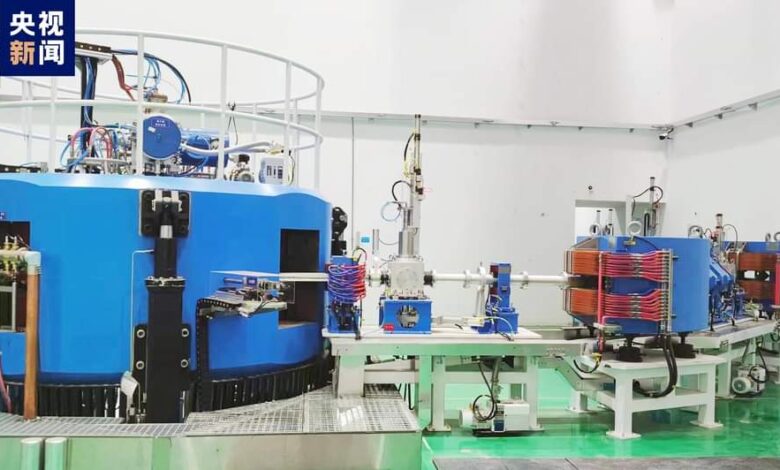China has recently announced the delivery of its brand new 50MeV HuaiRou Proton Cyclotron Facility in Beijing.

China has recently announced the delivery of its brand new 50MeV HuaiRou Proton Cyclotron Facility in Beijing. This pioneering facility will allow scientists to simulate space radiation environments on Earth for radiation protection research. With an energy range from 10 MeV to 50 MeV, it is set to revolutionize the way we approach advanced space exploration devices.
The HuaiRou Proton Cyclotron Facility marks a significant development in the field of space science research and technology. Its capacity to simulate space radiation environments means that we are one step closer to advancing our space exploration capabilities. This facility is particularly important in terms of radiation protection research.
Because of the extreme conditions encountered in space, radiation levels are significantly higher than those experienced on Earth. For this reason, the development of advanced space exploration devices, including radiation shielding for spacecraft and spacesuits, has been a top priority for space programs worldwide.
The HuaiRou Proton Cyclotron Facility allows scientists to replicate space radiation environments in a controlled environment. This is achieved by using a device called a cyclotron to accelerate protons, which are then directed into a target material.
When the protons collide with the target material, they produce secondary particles, including neutrons, which can be used to simulate the radiation that is encountered in space. By simulating these conditions on Earth, scientists can better understand the effects of radiation exposure and develop more effective means of radiation protection.
The development of the HuaiRou Proton Cyclotron Facility is a testament to China’s commitment to advancing space science research. China has made significant contributions to space science in recent years and is rapidly becoming a major player in the field.
Its space program has made significant strides in areas such as moon exploration, satellite launches, and manned spaceflight. With the delivery of this state-of-the-art facility, China has positioned itself at the forefront of radiation protection research, paving the way for advancements in space exploration technology.
The HuaiRou Proton Cyclotron Facility will be a valuable resource for researchers around the world who are working on projects related to radiation protection and space exploration. Its energy range of 10 MeV to 50 MeV means that it will be able to simulate a wide range of radiation environments, making it an incredibly versatile tool. This facility represents a major step forward in space science research and is sure to have a significant impact on the development of advanced space exploration devices in the years to come.
In conclusion, China’s delivery of the HuaiRou Proton Cyclotron Facility is a major milestone in the development of radiation protection research and advanced space exploration devices.
Its capacity to simulate space radiation environments on Earth will allow scientists to better understand the effects of radiation exposure and develop more effective means of radiation protection. This facility is a testament to China’s commitment to advancing space science research and is sure to have a significant impact on the field in the years to come.
arewanahiya.com







